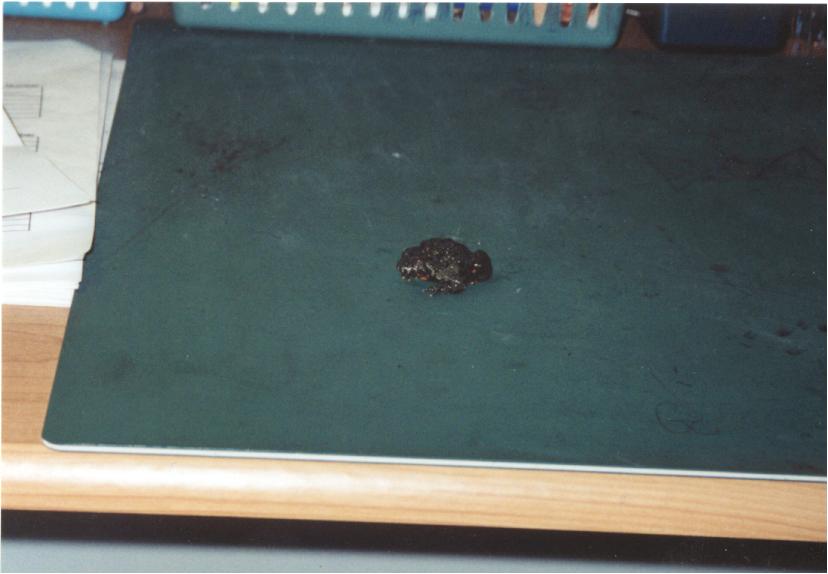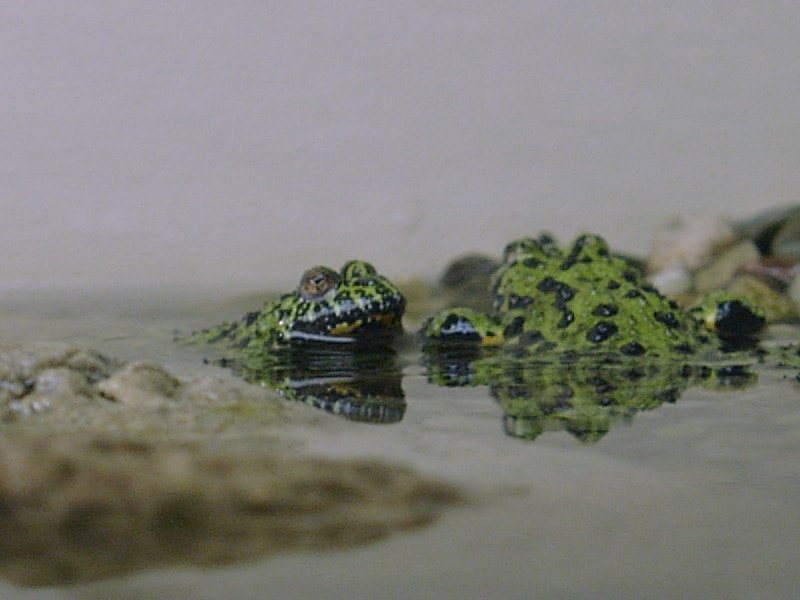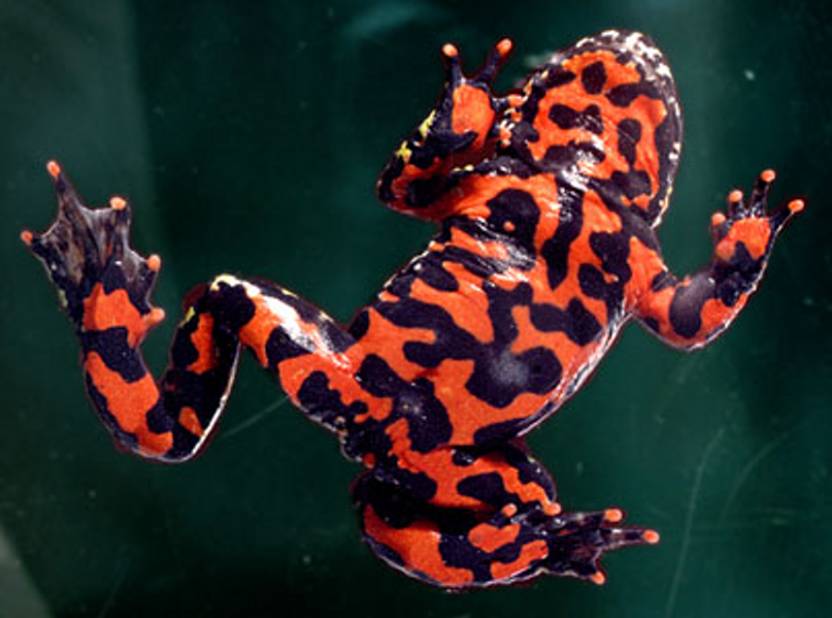|
Fire Bellied Toad
Bombina orientalis
The Fire Bellied Toad is located in Eastern Asia and parts of Europe, near streams and in forests. They have a bumpy back with a smooth stomach with red/black blotches, hence its name Fire Bellied. Unlike my other two kinds of frogs, it isnt a tree frog, nor is it a toad as the name implies. Its almost totally aquatic, spending day and night equally floating atop the water. Their color can range from light green (yellow) to dark brown, depending on mood. In their natural environments, their mucus on the body becomes toxic to other animals waiting to eat them. They develop this poisonous mucus from the specific insects they eat. One of few types of frogs whose tongue cannot reach very far out of the mouth at all, so they have to grab prey with their actual mouth, as opposed to say my lazy Whites Tree Frogs that can site on their fat asses and extend their tongue half their body length and catch a loitering cricket. These frogs love to live together in groups of 10 or more, so they are very social. Unluckily, I only have one, which used to live with one Fire Bellied Newt and Paddle Tailed Newt, but both died.
If you were to go out and buy one of these, it wouldnt be hard at all. One of the most abundant, if not the most abundant, supply of frogs in pet stores, not to mention cheap ($2-$5) depending on location and time of year. After a years time those animals reached the pet stores, Id guarantee theyd have lost most of the toxins because their diet would have consisted only of crickets, so dont worry about handling them and DYING, I havent yet although, I have had a few animals die that were in the cage with the fire bellied toad when I first got them, and Ive also read about the toads toxins being harmful to other animals, so be careful. But for people, the worst that could happen was getting a fresh Fire Bellied Toad and developing a slight rash. I would suggest buying at least a 20-gallon for more than two Fire Bellied Toads at a time. They can get very stressed out being cramped into a small cage, because they like to swim around and play with each other. I keep mine in a 10-gallon only because hes by himself. I lined the bottom with stones I found at the beach (bleached them one night, soaked in cold water the next) and piled up the stones on one side of the cage up three or four inches for land. There is about one inch of water in the water side, a large stone sticking out in a corner, and a crab shell for him to hide in during the day, although most are diurnal (active equally night and day). A small light could be used for the cage during the day; 30-50 watt is all thats needed. Once again, YOU DONT NEED TO STALE THE WATER FROM THE FAUCET! As I was searching the net again for info, I keep reading you need to make sure not to use tap water because of the chlorine that can kill the frogs, NOT TRUE! I use tap water on all my animal enclosures and theyre all fine.
These frogs, living in large groups, seem to not have problems finding mates. Telling a male from female is easy; the females are larger with somewhat duller colors, reaching up to 2.5 inches. The males are smaller (2 inches) and they have mildly larger forearms during mating season. Only the males can perform a mating call. The female will lay her eggs in groups of 100 entangled in water plant branches while the male will discharge sperm in sync. They hatch after a little lass than a week, metamorphosize into froglets after a month. They mature after a half-year to a year.
|  |

|
| Bombina orientalis on desktop |

|
| two Bombina orientalis in water |

|
| Bombina orientalis on glass |
|
|

